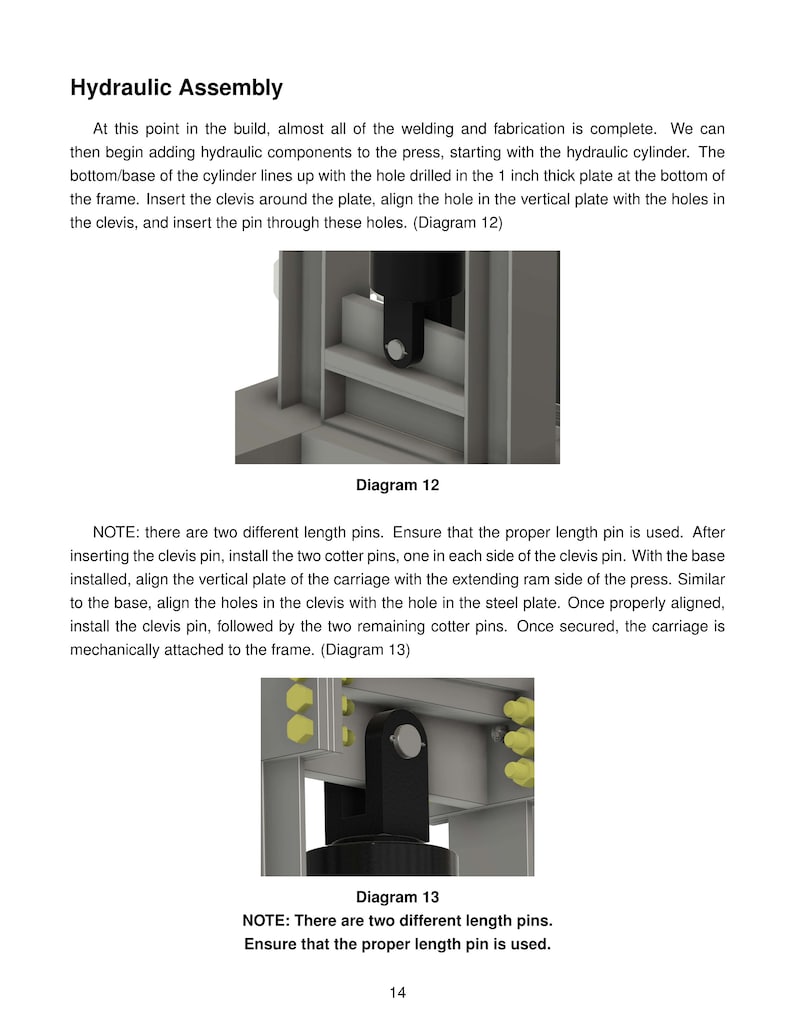
After welding, grind the welds smooth using a grinding wheel. Weld the Press Together After cutting all the parts and testing how they fit together, weld them securely. Lay out the press cylinder and ram, adjusting the height of the holes to match the clevises on the cylinder. Plan on using a heavy-duty welder to make sure the welds don’t fail when you use the press, considering the amount of pressure a can generate. The bottom also needs to be cut shorter to provide for adequate clearance. The center piece should be shorter than the base, enough so that you can weld in the side supports with sufficient clearance around the frame.

Build the Ram Construct the ram out of steel plate. Use a steel plate for the base of the forging press, and adjust the height of the frame as you see fit. The top of the frame should overhang the frame slightly to allow for a solid weld. Build the Frame Construct the frame with steel square tubing, leaving enough space between the ram and the bottom die base for the amount of working space you expect to need, keeping in mind the height of the base and the size of the dies you expect to use. A hydraulic press has great flexibility and production capacity compared to other methods of forging iron. A is the modern-day equivalent of a blacksmith’s anvil and hammer but allows today’s metalworker greater power, versatility, and strength when creating pieces made of iron or steel.


 0 kommentar(er)
0 kommentar(er)
